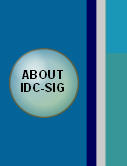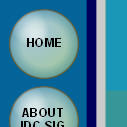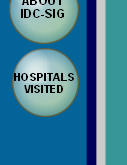.gif)
.gif)

|
Imaging in Developing Countries |
|
Special Interest Group |












|
The next day we had to try to sort out the wiring in the tubestand in the X-ray room and unfortunately we did not have circuit diagrams for this piece of equipment. It is manufactured in Italy and built to a World Health Organisation (WHO) specification. Several European manufacturers make similar units but I could not find the correct circuit diagram from my industry contacts in the UK. I decided to try to rewire the unit and draw out its circuit at the same time. This was not as easy as I thought but it proved worthwhile in the end. We spent a couple of days drawing out parts of the circuit as we re-wired the unit using some of its original cables and some of the new three core cable. We finally completed the job and to the delight of us all it worked and the local radiographer was able to X-ray his patients again. |
|
While all this work was being done I came to realise just how much we in the UK take things for granted; the 3 core cable was just one example. During the rewire I asked for several tools to undertake various jobs on the equipment. A hammer, no one had one. Allen keys, none could be found. A hacksaw, it was homemade from reinforcing bar bent as you would a junior hacksaw. Tools, Test Gear, and spares are in very short supply. I had taken a simple digital Multimeter with me which I left with the hospital electrician as he had worked so hard and always with a smile. My hand held oscilloscope was left with John Gulule again for his hard work. Iím sure these items will be put to very good use. |
|
Time had flown by and I had nearly reached the end of my visit. It had been arranged that we would travel in The Raven Trustís 4 x 4 pickup down to a lodge on the shores of Lake Malawi so that I could see some of the local sights on the way there. We passed a great deal of farmland where the farmers grow maize and vegetables. We also stopped at a rubber plantation and watched the latex dripping into upturned coconut shells. Most of the country is farmland with villages and settlements. Most villages have a well with a pump and you see young girls collecting water. Its not unusual for them to carry 75% of their bodyweight of water. You can buy vegetables and foodstuff at most village markets. We finally arrived at the Lodge at Nkhotakota bay. |
|
The lodge which is attached to a pottery is right on the shoreline of Lake Malawi. The rooms are very spacious and comfortable. Four of the rooms are named after the houses in the Harry Potter novels so I found myself staying in Ravenclaw for the night. We arrived in the early evening so it soon went dark. At this point you realise what light pollution does to the night sky at home in the UK. I have not seen a sky so clear and bright since I lived in the Middle East. John, Bob and I ate in the lodge restaurant where I had a local fish called Chambo fresh from the lake washed down with a Kuche Kuche beer. The next day after breakfast we set off on the final leg of our journey to Lilongwe where we were to stay overnight prior to going to the airport and my flight home. |
|
Lilongwe is the new capital of Malawi, the old capital Blantyre is further south. Most of the industry in Malawi is in Lilongwe. Banking and company head offices are in Blantyre. We stayed at the Korea lodge overnight where I saw my first TV for ten days (hadnít missed it at all). The following morning John and Bob took me on a tour of the local wholesalers as they had to buy supplies for other projects they are working on. Most things are readily available for general building and electrical works if you have the money to buy them. John and Bob are involved in various projects in schools and hospitals which are funded from Scotland and the UK. |
|
We arrived at the airport in the early afternoon in time for my return flight home. John and Bob were staying on for a while longer to do other work. My plane left on time and the journey was uneventful. The 8 hour wait for the connecting flight to Amsterdam was tedious but it gave me time to think about what I might be able to do next. |
|
Following my trip I have decided to continue working with the Raven Trust. I had discussions with them and CHAM about running a training course in Malawi for the local technicians. The course is still currently being sorted out and it is hoped it will take place in June 2009. In addition I am trying to collect X-ray and other hospital items to be sent to Malawi. The Raven Trust sends out several containers per year but funds have to be raised to pay for their transport to Malawi. Several people and hospitals have been very generous with items which are either currently in store or on their way to Malawi. Improved mobile phone and email is making things a little easier to get information out to the technicians when they need it. Improved communication to more remote hospitals is being investigated. We are trying to improve radiation protection by sending lead and lead glass and are currently assessing local bricks and building materials for their suitability for radiation protection. |
|
In conclusion I think my trip was certainly an eye opener for me and it has made me realise just how well off we are with our NHS hospitals and other health services. |
.gif)